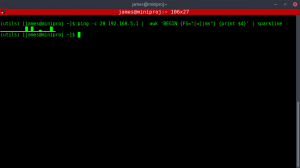The rpm-sphere rpm doesn’t work for me.
First install some packages, you may need more, these worked for me:
dnf install libindicator-gtk3 libdbusmenu-gtk3 libappindicator-gtk3 python-appindicator \ webkitgtk3 intltool
Then create a python virtualenv & activate it.
mkvirtualenv --system-site-packages -p $(which python2) utils
Download the variety & python-distutils-extra tarballs & untar.
Install both packages into your virtualenv (python-distutils-extra first).
python setup.py install
Go to virtualenv bin directory & rename variety.py (this upsets python module import)
cd ~/.virtualenvs/utils/bin mv variety.py varietybin.py rm variety.pyc
and run
variety
